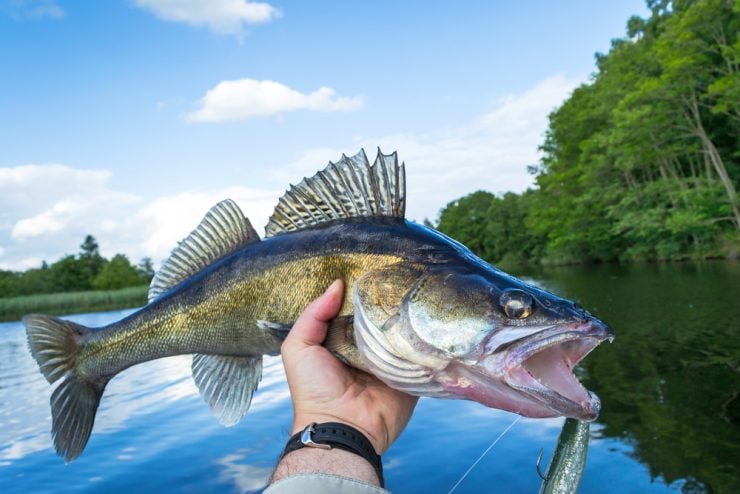Summer walleye fishing can be a blast, even if the heat makes those fish a bit finicky. With warm weather and clear waters, it’s a great time to be out on the lake, but you’ll need the right game plan. By focusing on smaller lures, trolling at the right speed, and targeting key spots, you can hook into some solid walleyes. Here’s how to make the most of your summer fishing trips.
Choose the Right Lure Size

In summer, walleyes often prefer smaller lures compared to the bigger baits that work in spring. This is because young minnows and juvenile perch—key food sources—are smaller this time of year. Matching the size of your lure to these prey fish is critical. Think compact crankbaits, small spoons, or finesse jigs.
Getting these smaller lures to the deeper waters where walleyes hang out in summer can be tricky since they don’t dive far on their own. Tools like snap weights, leadcore line, or inline sinkers can help you drop those baits to the right depth. It takes some tweaking, but once you get the setup dialed in, you’ll be in the strike zone.
Troll Smart and Fast
Speed is your ally when fishing for summer walleyes. Trolling at higher speeds—around 2.5 to 3 mph—helps you cover more water and find active fish. Certain lures, like flicker shads or specific trolling spoons, are built to handle these faster speeds without spinning out or losing their action. Check your local bait shop for what’s popular, as regional favorites often shine.
Faster trolling also helps you avoid catching unwanted species like white bass or sheepshead, which can dominate slower presentations. If you’re pulling nightcrawlers or other slow baits and getting swarmed by “junk fish,” try cranking up the speed. You’ll likely see fewer of those and more walleyes in the net.

Find the Hot Spots
Summer walleyes tend to congregate in specific areas, even if your sonar shows fish scattered everywhere. When you hook a walleye, mark the spot on your GPS immediately. Active fish are often in tight pockets, and you’ll want to swing back through that area. Those other marks on your screen? They could be non-target species, so don’t waste time chasing ghosts.
Pay attention to water temperature and current, as both play a big role in where walleyes set up. Look for breaks like humps, drop-offs, or submerged rocks where fish can duck out of the current to rest and ambush prey. A tool like a Fish Hawk can give you real-time data on water temp and your bait’s speed underwater, helping you fine-tune your approach.
Oxygen levels matter too. In warmer months, some areas of a lake can become low-oxygen zones where fish avoid. Focus on spots with good water flow or cooler temps, like near inlets or thermoclines, to find walleyes and their food.

Bonus Tip: Stay Flexible
Summer walleye fishing is all about adapting. If one spot or lure isn’t producing, switch it up. Try a different depth, speed, or bait color. Sometimes even a small change can turn a slow day into a hot one. Keep experimenting, and you’ll crack the code.
With these tips, you’re ready to hit the water and track down those summer walleyes. Good luck, and enjoy the day on the lake!


Add comment